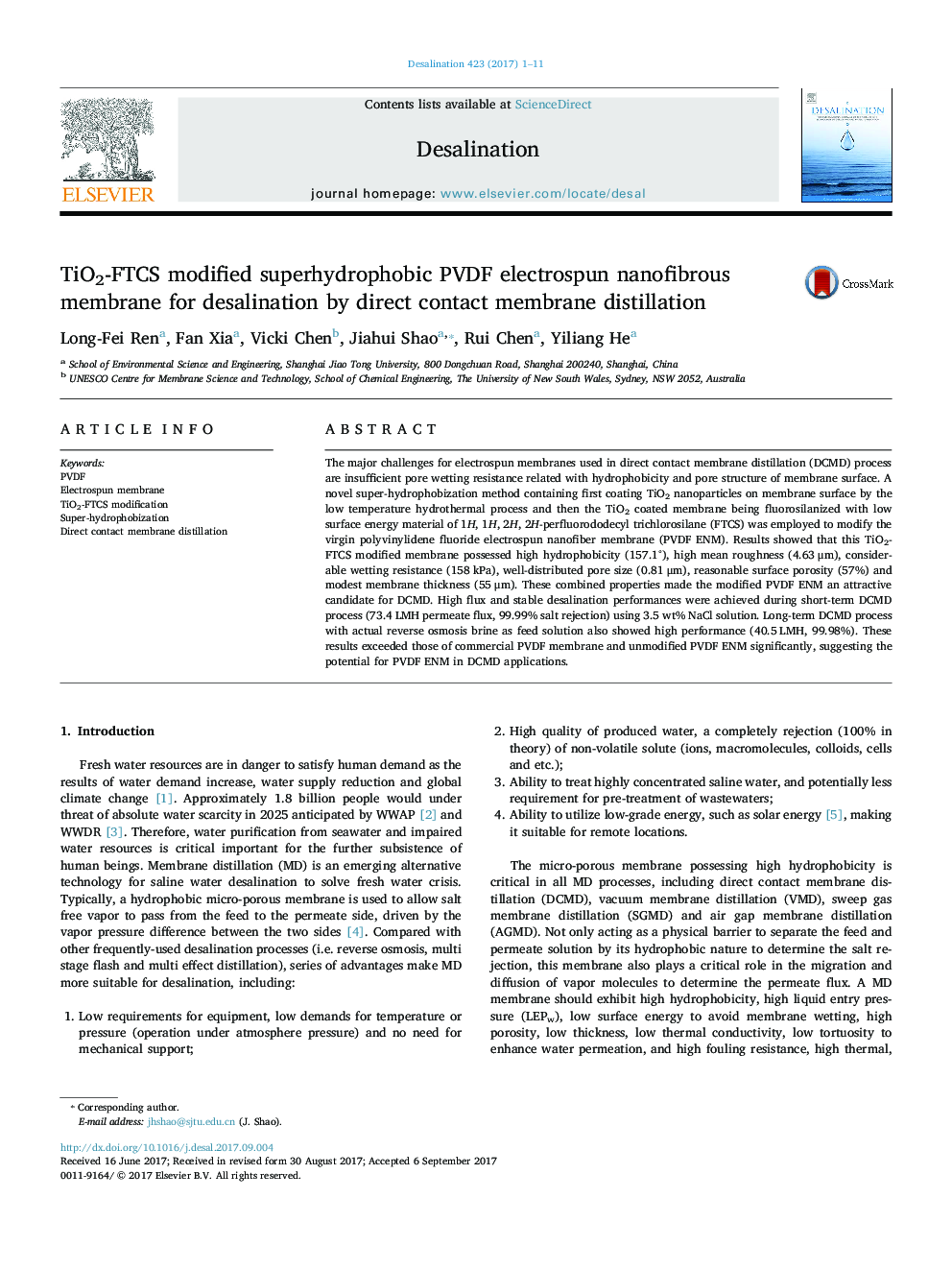| Article ID | Journal | Published Year | Pages | File Type |
|---|---|---|---|---|
| 4987521 | Desalination | 2017 | 11 Pages |
Abstract
The major challenges for electrospun membranes used in direct contact membrane distillation (DCMD) process are insufficient pore wetting resistance related with hydrophobicity and pore structure of membrane surface. A novel super-hydrophobization method containing first coating TiO2 nanoparticles on membrane surface by the low temperature hydrothermal process and then the TiO2 coated membrane being fluorosilanized with low surface energy material of 1H, 1H, 2H, 2H-perfluorododecyl trichlorosilane (FTCS) was employed to modify the virgin polyvinylidene fluoride electrospun nanofiber membrane (PVDF ENM). Results showed that this TiO2-FTCS modified membrane possessed high hydrophobicity (157.1°), high mean roughness (4.63 μm), considerable wetting resistance (158 kPa), well-distributed pore size (0.81 μm), reasonable surface porosity (57%) and modest membrane thickness (55 μm). These combined properties made the modified PVDF ENM an attractive candidate for DCMD. High flux and stable desalination performances were achieved during short-term DCMD process (73.4 LMH permeate flux, 99.99% salt rejection) using 3.5 wt% NaCl solution. Long-term DCMD process with actual reverse osmosis brine as feed solution also showed high performance (40.5 LMH, 99.98%). These results exceeded those of commercial PVDF membrane and unmodified PVDF ENM significantly, suggesting the potential for PVDF ENM in DCMD applications.
Related Topics
Physical Sciences and Engineering
Chemical Engineering
Filtration and Separation
Authors
Long-Fei Ren, Fan Xia, Vicki Chen, Jiahui Shao, Rui Chen, Yiliang He,
